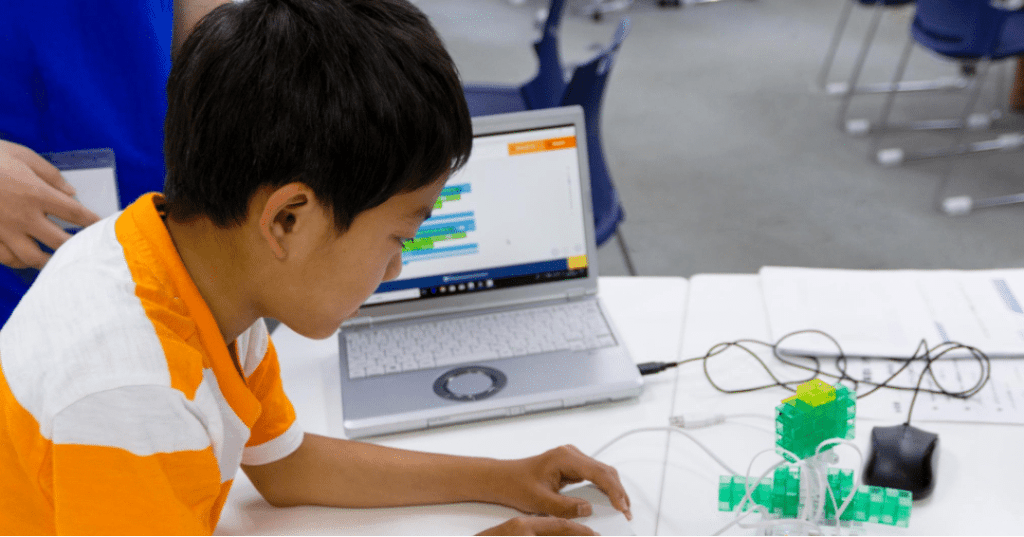
Types of Educational Robots
In the ever-evolving landscape of education, technology continues to play a pivotal role. Among the technological innovations that have made significant strides in recent years are educational robots. These robots are revolutionizing the way we teach and learn, making education more engaging, interactive, and effective. In Chapter 3 of our 5 parts series, we’ll delve into the exciting world of educational robots, exploring their types, applications, and the transformative impact they have on education.
What Are Educational Robots?
Educational robots are a category of robots specifically designed to aid and enhance the learning experience. They are equipped with various sensors, modules, and software that enable them to interact with students and educators. These robots come in diverse forms, each tailored to serve different educational purposes.
Types of Educational Robots
There are several types and categories of educational robots, below are two common types in Singapore.
1. Programming Robots
Programming robots, also known as coding robots, are designed to teach students the fundamentals of programming and computational thinking. These robots are equipped with sensors, actuators, and a user-friendly interface that allows students to create code and see the immediate physical results of their programming. Examples of programming robots are like Sphero, mBot and LEGO Mindstorms.
2. STEM Learning Robots
STEM learning robots focus on Science, Technology, Engineering, and Mathematics education. These robots engage students in hands-on activities that promote a deeper understanding of STEM concepts and encourage problem-solving and critical thinking. They often come with various sensors, allowing students to explore concepts like physics, engineering, and environmental science. They offer real-world applications, making STEM subjects more accessible and enjoyable. Examples of STEM learning robots are like micro:bit, Qdee and Sphero Bolt.
Applications of Educational Robots
Educational robots have found applications in various educational settings, from primary schools to universities. Here are some key areas where these robots are making a significant impact:
Classroom Learning
Educational robots have become invaluable tools in modern classrooms, revolutionizing the way students learn and teachers instruct. These robots offer a wide range of applications that enhance the educational experience, making learning more engaging, interactive, and effective. They provide hands-on opportunities for students to apply theoretical knowledge to real-world problems. For example, robotics kits allow students to build and program robots, fostering a deeper understanding of STEM concepts.
Special Education
Educational robots are highly valuable in special education programs. They can support students with diverse learning needs, providing personalized learning experiences, adapt to individual learning paces, and assist in communication development.
STEM Education
STEM robots are at the forefront of STEM education initiatives. They enable students to explore complex STEM concepts through hands-on experimentation and problem-solving.
Benefits of Educational Robots
The adoption of educational robots offers a multitude of benefits to both educators and students. From early childhood education to higher-level learning, these robots play a pivotal role in nurturing young minds. Some of the key advantages are:
Engaging Learning
Educational robots capture students’ attention and keep them engaged in the learning process. Their interactive nature, combined with gamified activities, makes learning enjoyable and motivates students to participate actively.
Personalized Education
Educational robots can adapt to individual learning paces and styles, providing customized learning paths. This personalization ensures that each student receives the support and challenges they need to excel.
Skill Development
Educational robots are particularly effective in teaching Science, Technology, Engineering, and Mathematics (STEM) subjects. They help students develop problem-solving skills, computational thinking, and coding abilities essential for success in the digital age. From coding and problem-solving to social and emotional skills, educational robots help students develop a wide range of competencies.
Inclusivity
Educational robots can be used to support students with special needs, making learning more accessible and inclusive. These robots can provide additional assistance and create a supportive learning environment.
The Future of Educational Robots
As technology continues to advance, the future of educational robots looks promising. We can expect to see more sophisticated robots with advanced AI capabilities, further enhancing the educational experience. Additionally, the integration of virtual reality (VR) and augmented reality (AR) into educational robots will open up new dimensions of immersive learning.
FAQs
Q1: What age group are educational robots suitable for?
A1: Educational robots are designed for learners of all ages, from young children to adults. There are robots tailored to different age groups and educational levels.
Q2: Can educational robots replace human teachers?
A2: Educational robots are not meant to replace human teachers but to assist them. They enhance the teaching and learning process by providing support and personalized instruction.
Q: Are educational robots expensive?
A3: The cost of educational robots varies widely depending on the type and complexity of the robot. Some entry-level robots are affordable for educational institutions, while more advanced models can be pricier.
In conclusion, educational robots are at the forefront of educational innovation, transforming the way we teach and learn. With their diverse types, applications, and numerous benefits, they hold the promise of creating more engaging, personalized, and inclusive educational experiences. As technology continues to evolve, so will the capabilities of these remarkable robots, shaping the future of education in exciting ways.





